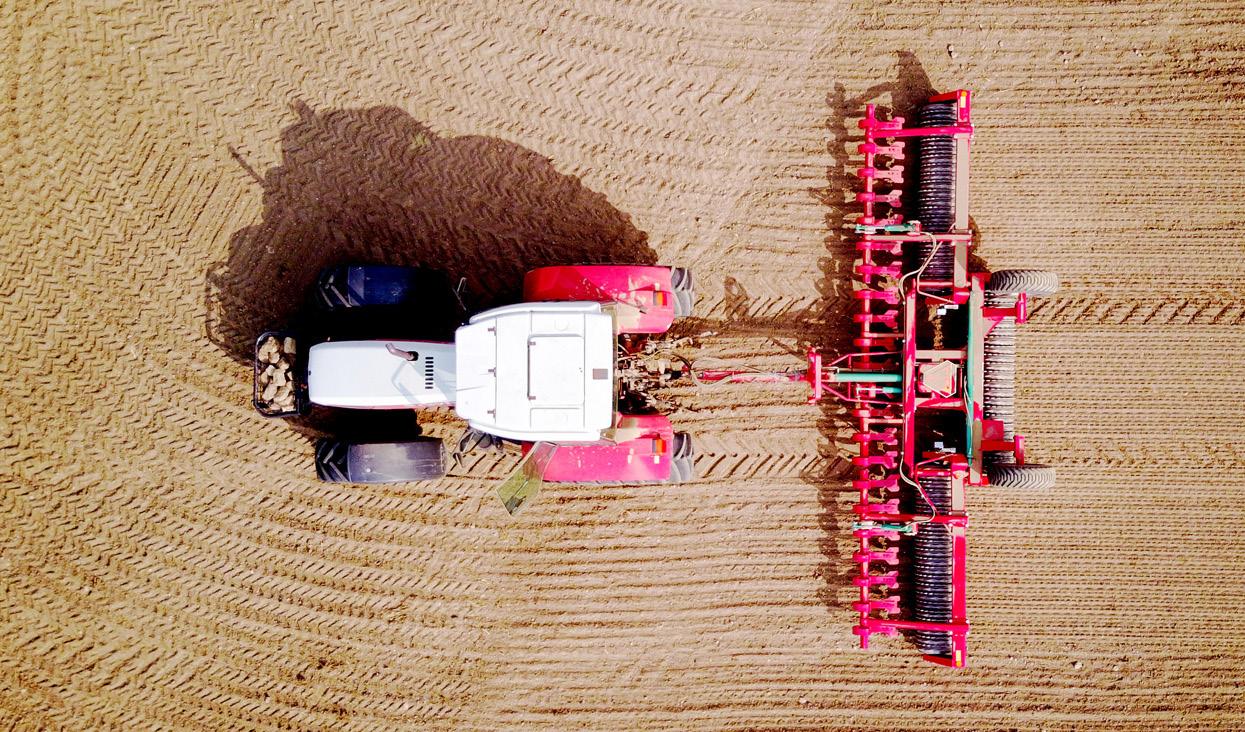
7 minute read
Building standards – do we need to do more?
from A NIBA Brokers' Guide: A sustainable future climate hazard prevention and mitigation strategies
by niba_au
With tropical cyclones projected to increase in intensity and affect more of Australia according to Climate Measurement Standards Initiative research, are current building standards up to the challenge?
Across the board, Australian building standards have a basic remit – preserve and protect life. As Willis Towers Watson senior risk engineer Ben Small encapsulates, they’re all about making sure buildings don’t burn, flood, or be blown away while they’re occupied.
Since Cyclone Tracy virtually obliterated Darwin on Christmas Day in 1974, the threat posed by ferocious wind and rain has informed construction standards. But as the effects of climate change push such severe weather events into more parts of the country, is there more that can, and should be done?
Small says building developers and owners, whether commercial or residential, have a range of simple and potentially inexpensive means to better manage and mitigate their risks.
“Apart from the safety aspects, there are things you need to put in place that result in the building envelope not being breached and you can continue to live in your house or operate your business,” he says. “If you have a catastrophic loss, insurance is there to get you back to where you began, but what happens if you’re not able to run your business for a prolonged period? Where do your customers go? Competitors can come in and take your market share.”
When it comes to attracting cover for cyclone or severe weather perils, especially where wind speeds can wreak significant damage, Small says people located in noted areas such as Townsville, Darwin or Karratha still have an opportunity to manage and mitigate risk beyond what the building standards prescribe. “There is a major difference between the standards and the advice we provide on top,” he says.
“If you have roof-mounted equipment, does it really need to be there? Power, water, telecommunications – they’re permitted to be on the roof as far as the standards are concerned, but will get damaged in a cyclone. We recommend anyone facing the possibility of severe weather impacts has a pre, during, and post checklist that takes them through all the things that will minimise damage.
“In a cyclone, there can be a big pressure differential from the outside to the inside. Anything that comes through a window can break the building envelope and then it doesn’t matter how well your roof is screwed down.”
INVESTING IN RESILIENCE
Small says in talking to clients building on a greenfield site, the cost to add features that mitigate risk is generally not high. “If they’re in a major hazard area and building from scratch, they’re going to choose correct roofing structures, the right type of walls, and probably upgrade the glass they use. Any of their utilities get housed within the building rather than the roof or outside. The aim is to keep the building envelope intact and avoid water ingress damage. That gives you the ability to bunker down until the cyclone goes over.
Steven Hill, Director of the Capital Innovation Insurance Group says the level of change to building regulation in Queensland has increased substantially since the 2011 floods, particularly around ensuring the base slab is built
to a certain height. “Depending on where the property is, that can be over one metre,” he says.
But the market for domestic insurance cover remains expensive in Queensland. “The availability for certain risks and parts of the state has been badly affected and that’s attributable directly to climate change,” he says. “Take areas of the Gold Coast – insurers are more nervous about offering flood, or indeed, cover at all for the thousands of properties next to canals. That’s a link to rising sea levels. Weather events mean we’re at a point that it’s tricky to obtain property insurance anywhere north of Bundaberg.”
“Without resilient buildings, older buildings are getting ruled out of cover or premiums are very expensive. I think the market here has three or four times the premium rate of NSW or Victoria. Unfortunately, when we’re giving clients advice on mitigating their risk, there’s little we can say that won’t cost them money.”
David Henderson, the chief engineer at the Cyclone Testing Station at James Cook University (JCU) in Townsville, says building standards only go so far in terms of life safety and robustness.
“Standards have done well in terms of their ability to protect occupants in cyclone-prone areas, however aspects of poor performance, for example from wind-driven rain, can render our buildings unliveable after the event. Poor use of materials or lack of maintenance can leave buildings vulnerable. If we can’t live or
work in buildings after a medium-sized event, then it’s probably the small things that are letting us down.”
Henderson says standards are a part of the resilience ‘chain’. “Building standards could do more, but that would add to cost. A way forward could be to give people choice, so they can make informed decisions on performance criteria that have been vetted and rated – along the lines of energy efficiency ratings we’ve all come to rely upon.
“The North Queensland Strata Title Inspection Program developed by the Cyclone Testing Station at JCU, pioneers a resilience rating system that some insurers are using to reduce premiums for resilient buildings. It also advises and educates building owners on ways they can improve the resilience of their buildings. This system is applicable to all types of buildings, but we still need the designers, engineers, and builders using the right products in the right way, and everyone in the value chain ensuring the ongoing durability of the building.”
WHERE YOU BUILD MATTERS
The Gold Coast remains one of the most storm-exposed areas of Australia, says Small. “In the 1970s and 1980s a lot of buildings were developed along a spit north of Surfers Paradise,” he said. “That doesn’t need much of a storm surge for the water to come over the top.
“In a cyclone, low pressure sucks up the sea and drives it into the land. There are several variables, but a surge could be anywhere up to two metres. With the impacts of climate change, this is only going to get worse over the next 30 to 50 years. Thankfully, there has been a lot of land rezoning to avoid building in these types of areas, both in Queensland and in Western Australia, so the main impact from cyclones becomes the wind, rather than the surge.”
THINGS TO CONSIDER
1. Talk to your clients about small, relatively inexpensive improvements to better prepare their properties for storm damage. If equipment doesn’t need to be exposed to the elements on the roof, take it inside. 2. Building standards are a basic requirement to preserve life, rather than a prescription for successful risk mitigation. Your advice could make the crucial difference in the event of your client’s weather-related loss. 3. Help educate your clients on insurer-rated materials and using the right materials in the right way if they are considering building or renovating. 4. Your clients may wish to consider the enormous strain COVID-19 has put on supply chains and resources leading to steep cost hikes. Current cover levels may not get your clients back where they were.
THE RISK OF UNDERINSURANCE
When weather wreaks havoc across Australia, another tempest looms for property owners. Graham Turnock, Allianz Australia Insurance Limited (Allianz) National Underwriting Manager Property says building cost inflation is resulting in widespread underinsurance.
“Catastrophes are like a magnet – they attract resources,” Turnock says. “COVID-19 border closures and supply chain disruptions mean resources are scarce – so claims costs go up. We’ve seen instances where some property owners receive a settlement capped at their sum insured, or less if coinsurance applies, which is often not enough to get them back to where they were prior to the loss.
“As far as building standards are concerned, local Councils reframe and update their regulations after an event, and everyone starts to play catch-up. If the damage was severe, the building code changes and this drives the need to enhance resilience, and this in turn loads up the costs again.
“Regulators are no doubt trying to strike the right balance between mitigation and imposing costs on existing and new property owners. It’s a high wire act as not every property or business owner has the financial means to respond, and that’s leading to some significant underinsurance, we’ve seen instances as much as 20 to 30 per cent. For clients who are connected to their community they can be placed in the situation of taking a claim settlement and relocating, and if they don’t want to leave, their only alternative in this scenario is to take on debt to completely reinstate.”
Turnock says brokers can add value to their clients by helping them understand current and emerging weatherrelated risks, conducting appropriate due diligence and encouraging an investment in resilience. Building a buffer into the sum insured is another important consideration.
“We’ve just gone through climate forecasts for our business looking at the ICA catastrophe data,” he said. “Up to August this year, six of the top 10 largest historical catastrophes were related to weather-peril La Nina events, and this is the predicted weather environment for this summer.”
“If a broker could present a risk that shows a client understands the potential impacts of a weather cat event and has put appropriate measures in place, versus a client who for a variety of reasons doesn’t have a plan, the one with a plan will be viewed more favourably.”




